

— Products —
 Consumer hotline +8618073152920
Consumer hotline +8618073152920 WhatsApp:+8615367865107
Address:Room 102, District D, Houhu Industrial Park, Yuelu District, Changsha City, Hunan Province, China
All products
second-class pyranometer is an instrument used to measure solar radiation intensity, adhering to the World Meteorological Organization (WMO) second-class standards. It is suitable for measuring total solar radiation within the spectral range of 0.3-3μm. The core component is a wire-wound thermopile with multiple junctions, coated with a high absorption black coating to absorb solar radiation energy. The hot junctions are located at the sensing surface, while the cold junctio···
Tel/WhatsApp:+8615367865107
Email:Arvin@niubol.com +Nearly 100 partner company in more than 68 countries. We are committed to providing high-quality, practical products to meet your needs and help you solve problems.Product Details
A second-class pyranometer is an instrument used to measure solar radiation intensity, adhering to the World Meteorological Organization (WMO) second-class standards. It is suitable for measuring total solar radiation within the spectral range of 0.3-3μm. The core component is a wire-wound thermopile with multiple junctions, coated with a high absorption black coating to absorb solar radiation energy. The hot junctions are located at the sensing surface, while the cold junctions are inside the body. The temperature difference creates an electric potential, and the output signal is proportional to the radiation intensity. The double-layer glass design reduces air convection and infrared radiation interference, ensuring measurement accuracy.
Compared to first-class or high-precision radiation sensors, the second-class pyranometer strikes a balance between accuracy and cost, making it widely used in solar energy utilization, meteorology, agriculture, building materials aging, and atmospheric pollution research.
The core sensor of the pyranometer is a multi-junction thermopile, which is coated with a high absorption black layer to absorb the maximum amount of solar radiation. The hot junctions are located on the sensing surface, while the cold junctions are inside the body. When solar radiation heats the sensing surface, the thermopile generates a voltage signal proportional to the radiation intensity.
To enhance measurement accuracy, the sensor features a double-layer glass cover structure, which effectively isolates external air disturbances and reduces infrared radiation interference, ensuring long-term stable operation.
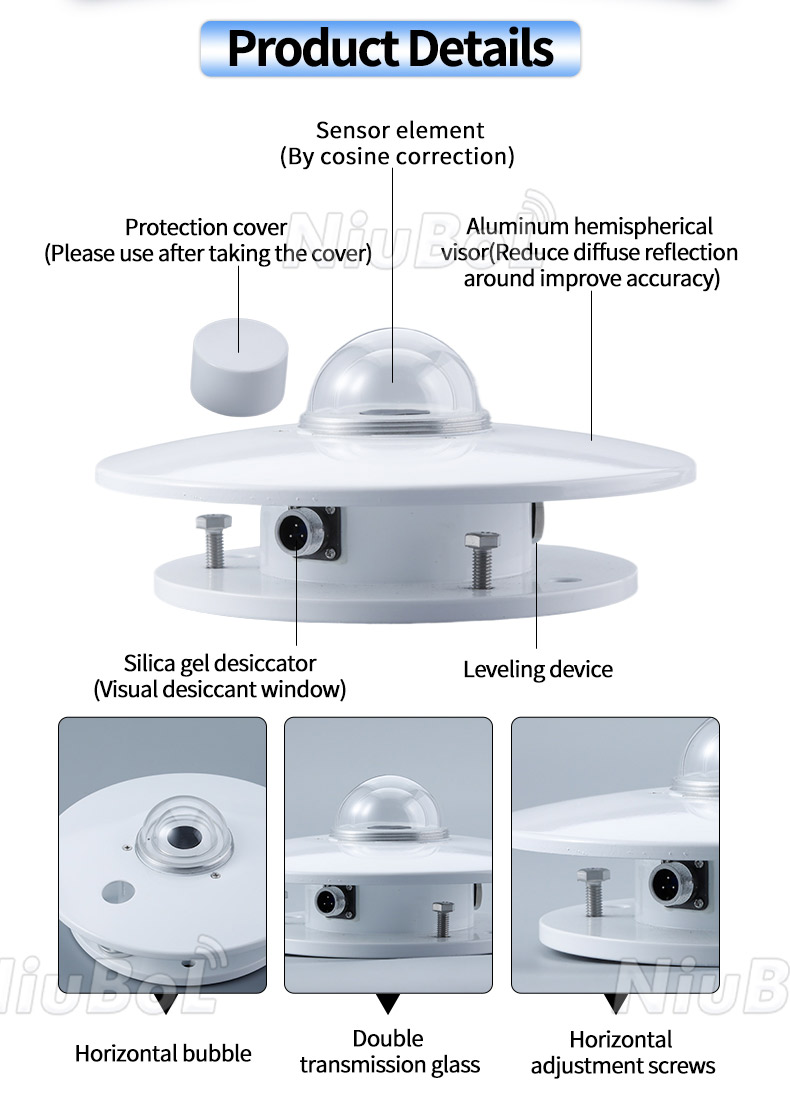
- Sensitivity: 7-14μV/W·m⁻²
- Spectral Range: 0.3-3μm
- Measurement Range: 0-2000W/m²
- Power Supply: DC 12V or 24V
- Output Format: 4-20mA, 0-5V, RS485
- Cable Length: Standard 2.5 meters
- Response Time: ≤35 seconds (99%)
- Internal Resistance: Approx. 350Ω
- Annual Stability: ≤±2%
- Cosine Response: ≤7% (at solar altitude angle 10°)
- Azimuth Response Error: ≤5% (at solar altitude angle 10°)
- Temperature Characteristics: ±2% (-10°C to +40°C)
- Operating Temperature: -40°C to +50°C
- Non-Linearity: ≤2%

Second-class pyranometers are mainly used for the following measurements:
1. Total Solar Radiation: Measures solar radiation intensity within the 0.3-3μm spectral range (W/m²), used for assessing solar energy resources.
2. Reflected Radiation: Measures the reflected radiation from the ground by positioning the sensing surface downward, suitable for surface albedo studies.
3. Scattered Radiation: Measures atmospheric scattered radiation with a shading ring, supporting atmospheric transparency analysis.
4. Inclined Surface Radiation: Measures the incident radiation on tilted surfaces, optimizing solar panel angles.
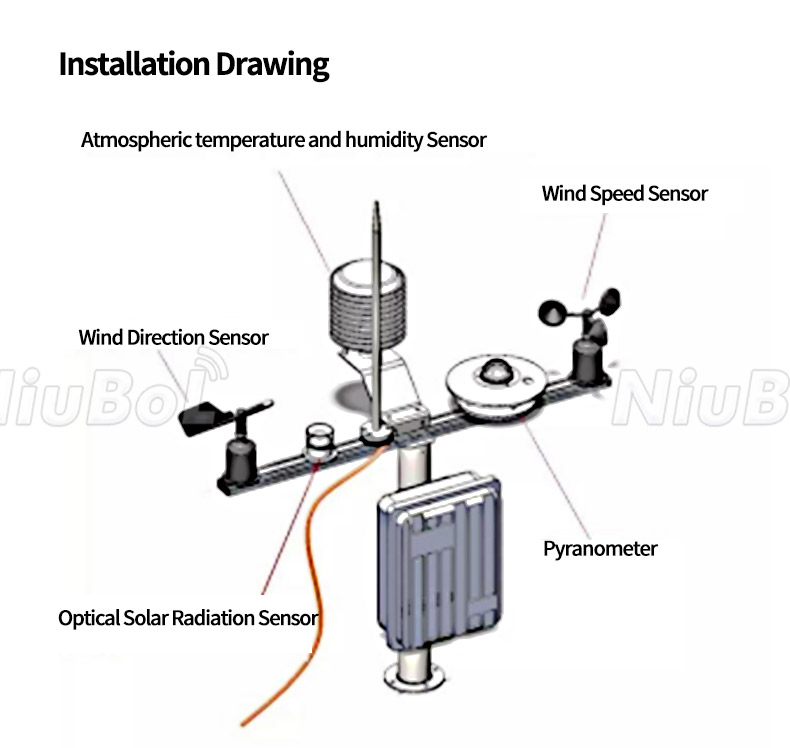
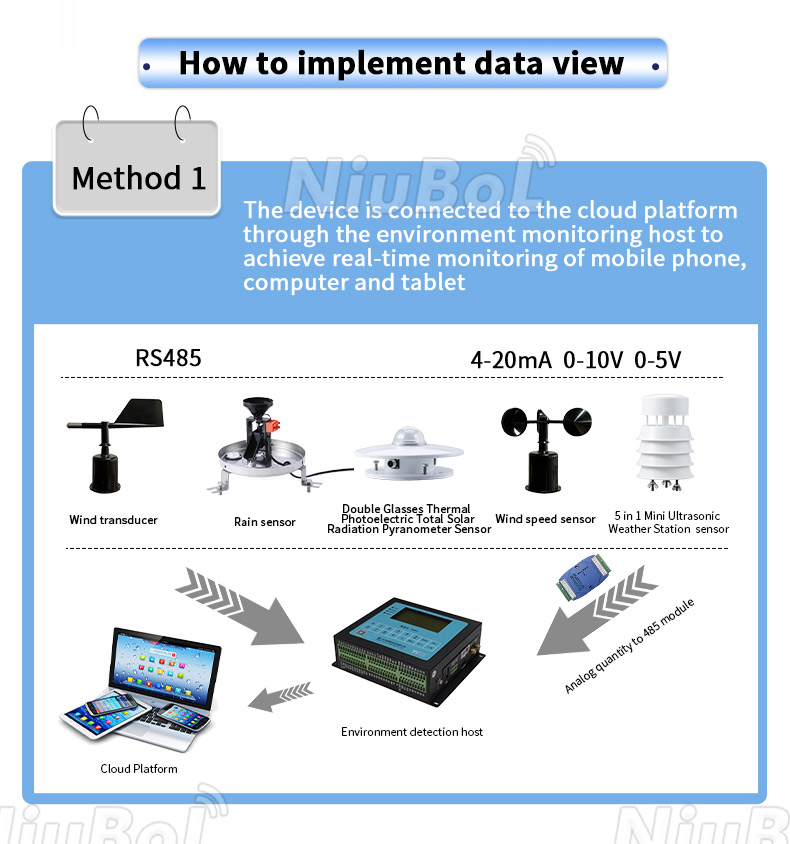
1. Solar Energy Utilization: Assessing solar energy resource potential and optimizing photovoltaic station siting and operational efficiency.
2. Meteorological Monitoring: Providing solar radiation data to improve weather forecasting and climate model accuracy.
3. Agricultural Production: Monitoring light intensity required for photosynthesis, guiding crop planting and greenhouse management.
4. Building Material Aging: Measuring UV and visible light radiation, assessing the aging rate of building materials under sunlight.
5. Atmospheric Pollution Research: Monitoring scattered radiation and analyzing the effects of atmospheric particulate matter and aerosols on radiation.
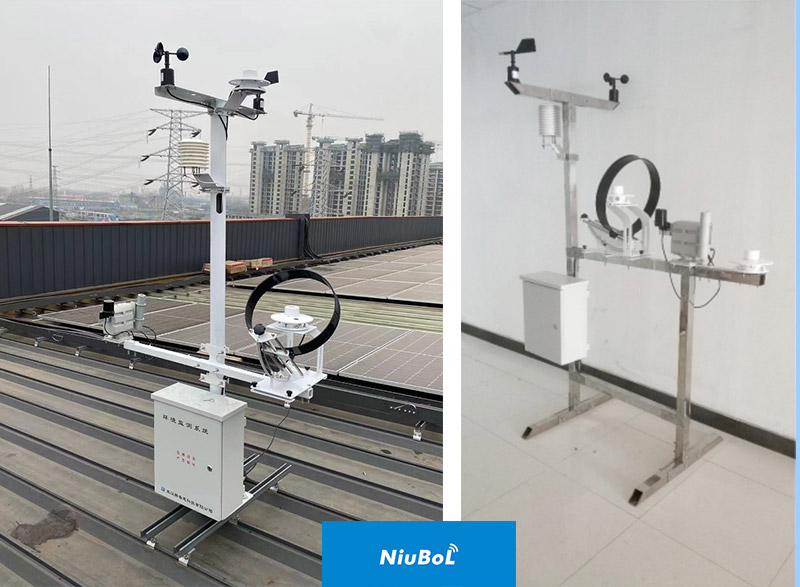
- Precise Data Support: Provides high-precision radiation data (±2% annual stability), optimizing solar energy and agricultural applications.
- Cost-Effectiveness: Compared to first-class sensors, second-class sensors are more affordable, suitable for small and medium-sized projects.
- Versatility: Supports the measurement of various radiation types to meet the needs of different fields.
- Environmental Adaptability: Can operate stably in temperatures ranging from -40°C to +50°C, making it ideal for long-term field monitoring.
- Intelligent Management: Via RS485 or 4-20mA outputs, it can be integrated into IoT systems for remote monitoring.
1. High Precision Measurement: Sensitivity of 7-14μV/W·m⁻², measuring range of 0-2000W/m², meeting meteorological and agricultural needs.
2. Double-layer Glass Cover: Reduces air convection and infrared radiation interference, ensuring data accuracy.
3. Multiple Output Options: Supports 4-20mA, 0-5V, and RS485, compatible with various data acquisition systems.
4. Strong Durability: Suitable for long-term field use in environments from -40°C to +50°C.
5. Low Maintenance Costs: Simple structure and easy maintenance, suitable for large-scale deployment.
The second-class pyranometer produced by our company offers excellent response speed, stability, and durability, making it an essential component for solar energy evaluation and meteorological station systems.
To ensure accurate data from the second-class pyranometer, follow these installation steps:
1. Select Installation Location: Choose an open area with no obstructions (trees, buildings, etc.), ensuring the sensing surface is not shaded.
2. Adjust Direction and Level: Align the sensor cable plug to face north, level it with a spirit level, and secure it tightly with bolts.
3. Connect Equipment: Connect the output cable to the data acquisition device (e.g., recorder or IoT platform).
4. Fix the Cable: Secure the cable to the installation frame to prevent wind-induced breakage or signal disruption.
5. Precautions:
- Avoid obstructing the sensing surface, ensuring it is free of dust or water droplets.
- Regularly check the level to prevent tilting caused by foundation settlement.
- Avoid touching or colliding with the glass cover during installation.
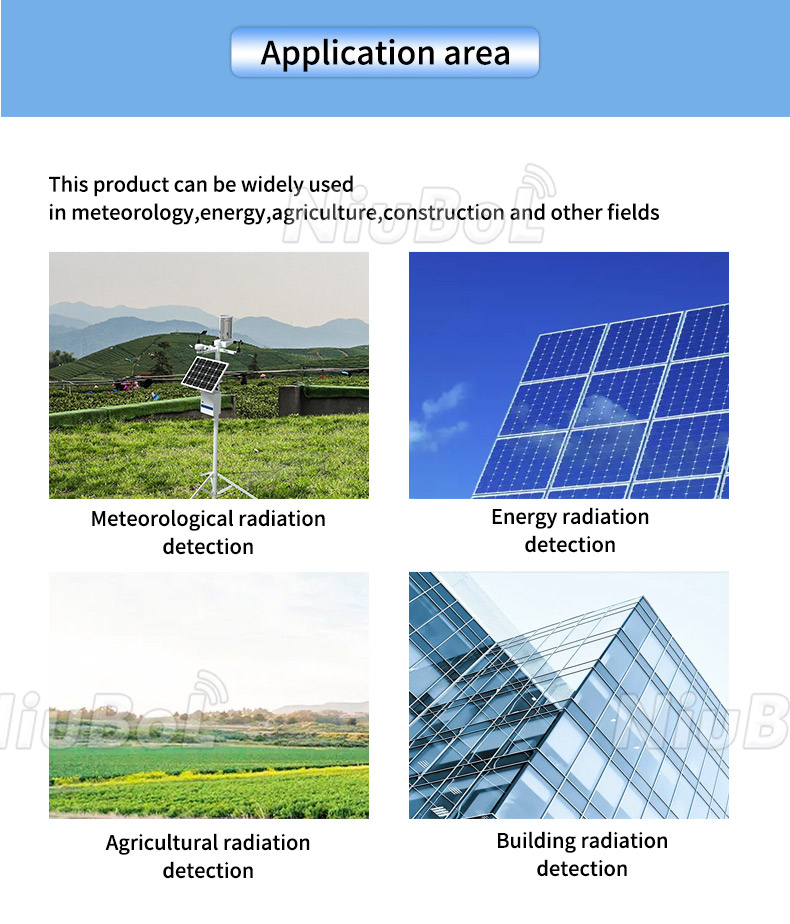
To ensure long-term stable operation of the second-class pyranometer, regular maintenance is required:
1. Protect the Filter Glass: Do not disassemble or loosen the filter glass to avoid damaging the delicate and valuable glass cover. Clean the filter glass regularly with a soft cloth or fur to keep it clean.
2. Check the Desiccant: Regularly check the color of the desiccant in the desiccator (blue is normal, red or white indicates moisture). If moist, replace or dry it until it turns blue again.
3. Waterproof Protection: While the sensor has good waterproof performance, it is recommended to add a protective cover in heavy rain, snow, or hail weather. Remove it once the rain stops.
4. Regular Calibration: After two years of use, the sensitivity should be recalibrated by the manufacturer or metrology department to ensure accuracy.
5. Avoid Vibration: Prevent violent vibration or impact to extend the lifespan of the device.
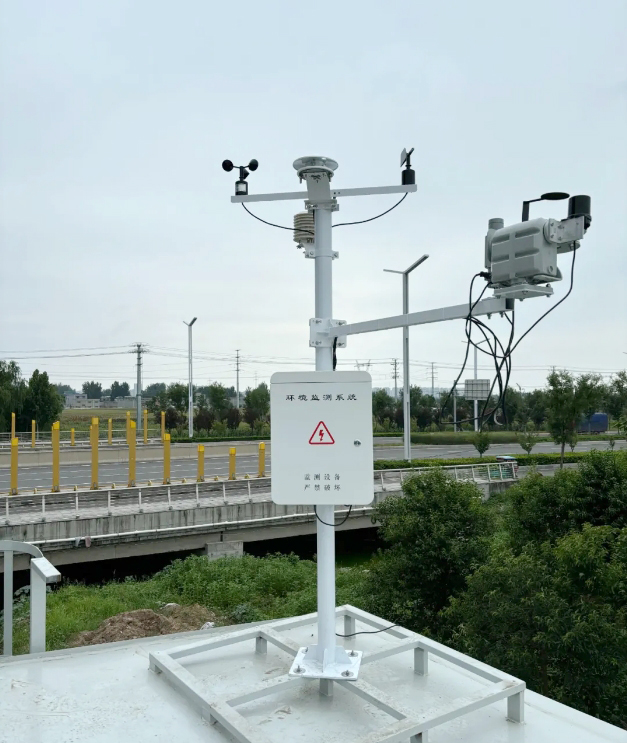
Niubol second-class pyranometer offers the following service guarantees:
- One-Year Warranty: Free repair or replacement within one year from the factory date for quality issues not caused by human factors.
- Lifetime Repair: Even after the warranty period, the company offers lifetime repair services, charging only for the cost (in cases of human damage).
- Technical Support: Provides professional installation guidance and data analysis support to ensure the best user experience.
The second-class pyranometer, with its high cost-performance, precise measurements, and versatility, is an ideal tool for solar energy utilization, meteorological monitoring, and agricultural production. The Niubol second-class pyranometer uses thermoelectric sensing principles to provide radiation data within the 0.3-3μm spectral range, supporting multiple output options and operation in harsh environments. By following correct installation and maintenance procedures, users can obtain reliable radiation data to optimize solar energy utilization, enhance crop yields, and support environmental research. Choose Niubol second-class pyranometer for a smart future in precise radiation monitoring! For any technical issues or customization requirements, feel free to contact us anytime.
NBL-W-SRS-Solar-radiation-sensor-instruction-manual-V4.0.pdf
NBL-W-HPRS-Solar-Radiation-Sensor-Instruction-Manual-V3.0.pdf
Sensors & Weather Stations Catalog
Agriculture Sensors and Weather Stations Catalog-NiuBoL.pdf
Weather Stations Catalog-NiuBoL.pdf
Related recommendations
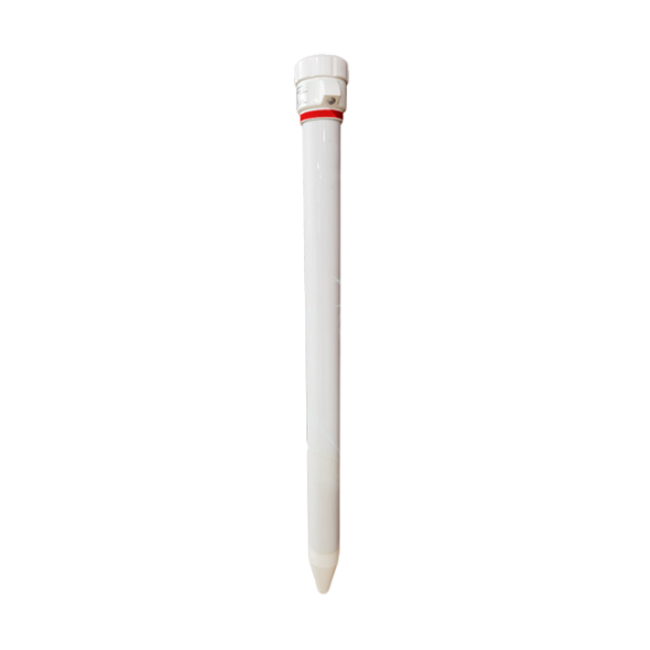 Multi-Depth Soil Sensor RS485
Multi-Depth Soil Sensor RS485 TDR Soil Moisture Sensor
TDR Soil Moisture Sensor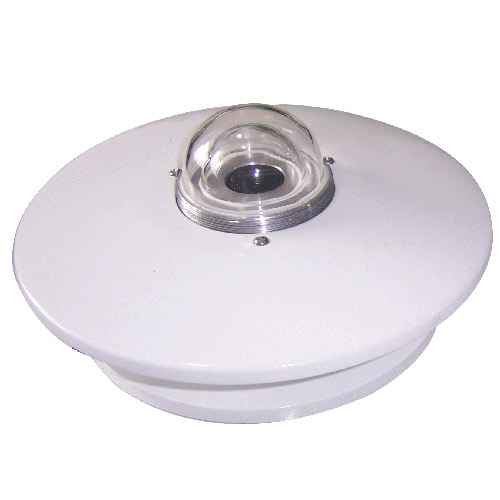 Pyranometer Solar Radiation Sensors
Pyranometer Solar Radiation Sensors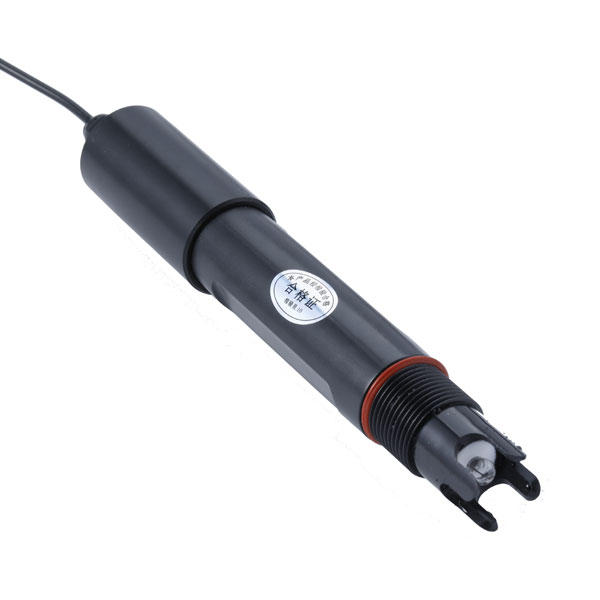 Soil ph sensor
Soil ph sensor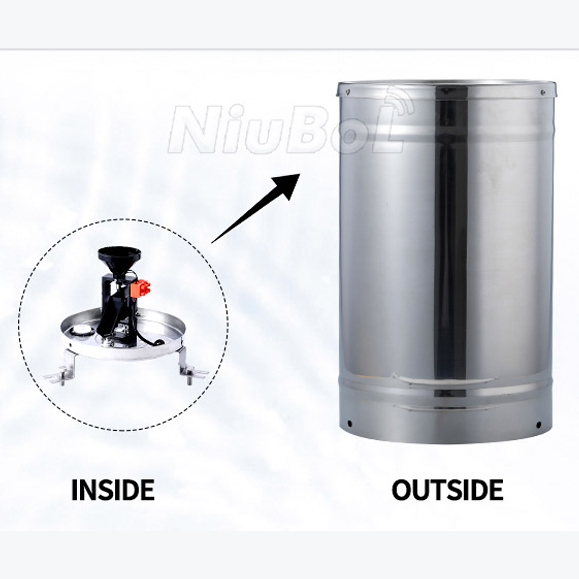 Tipping Bucket Rain Gauge
Tipping Bucket Rain Gauge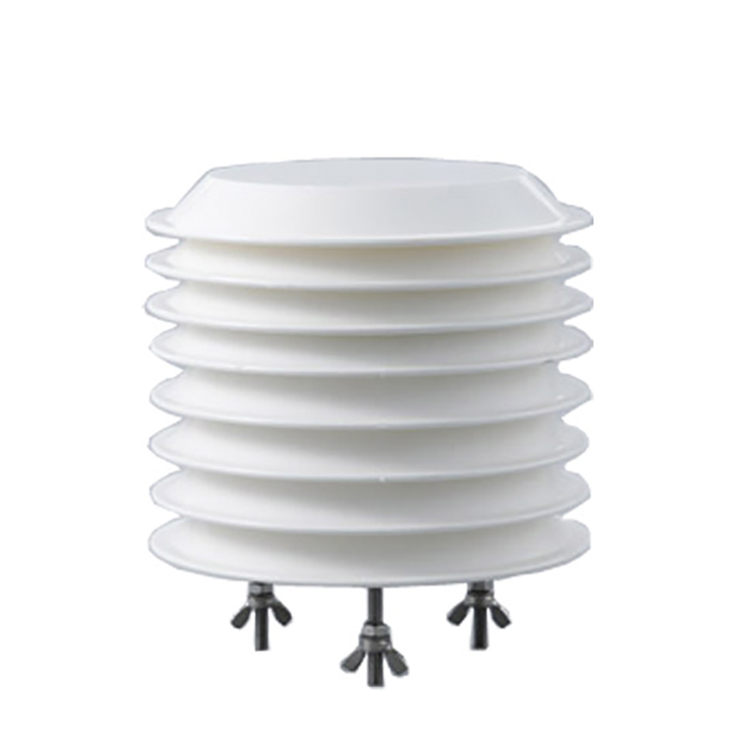 Air Temperature and Humidity Sensor
Air Temperature and Humidity Sensor
Screenshot, WhatsApp to identify the QR code
WhatsApp number:+8615367865107
(Click on WhatsApp to copy and add friends)
